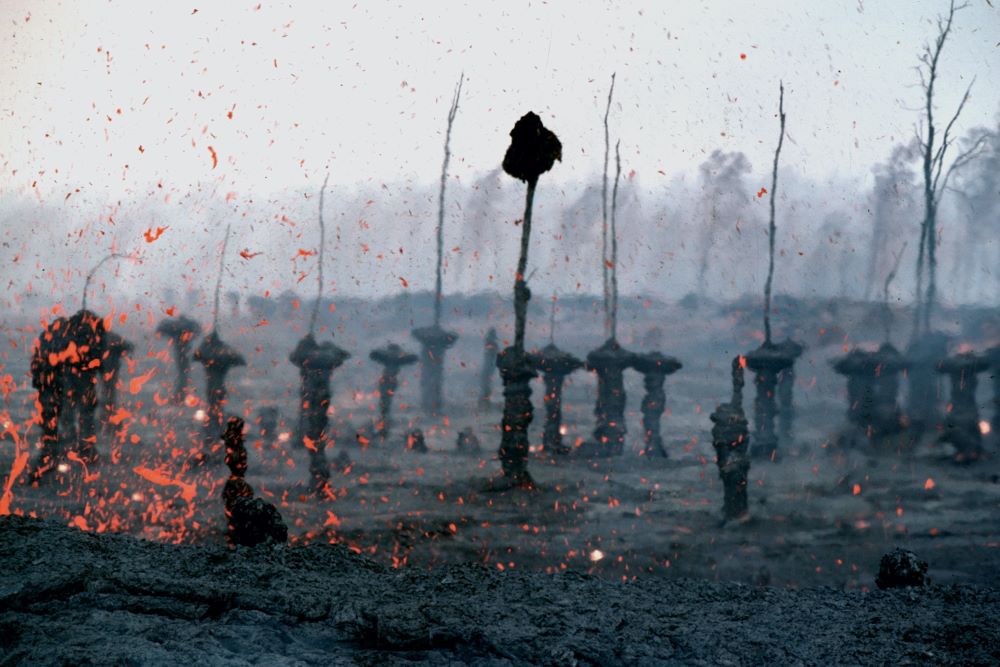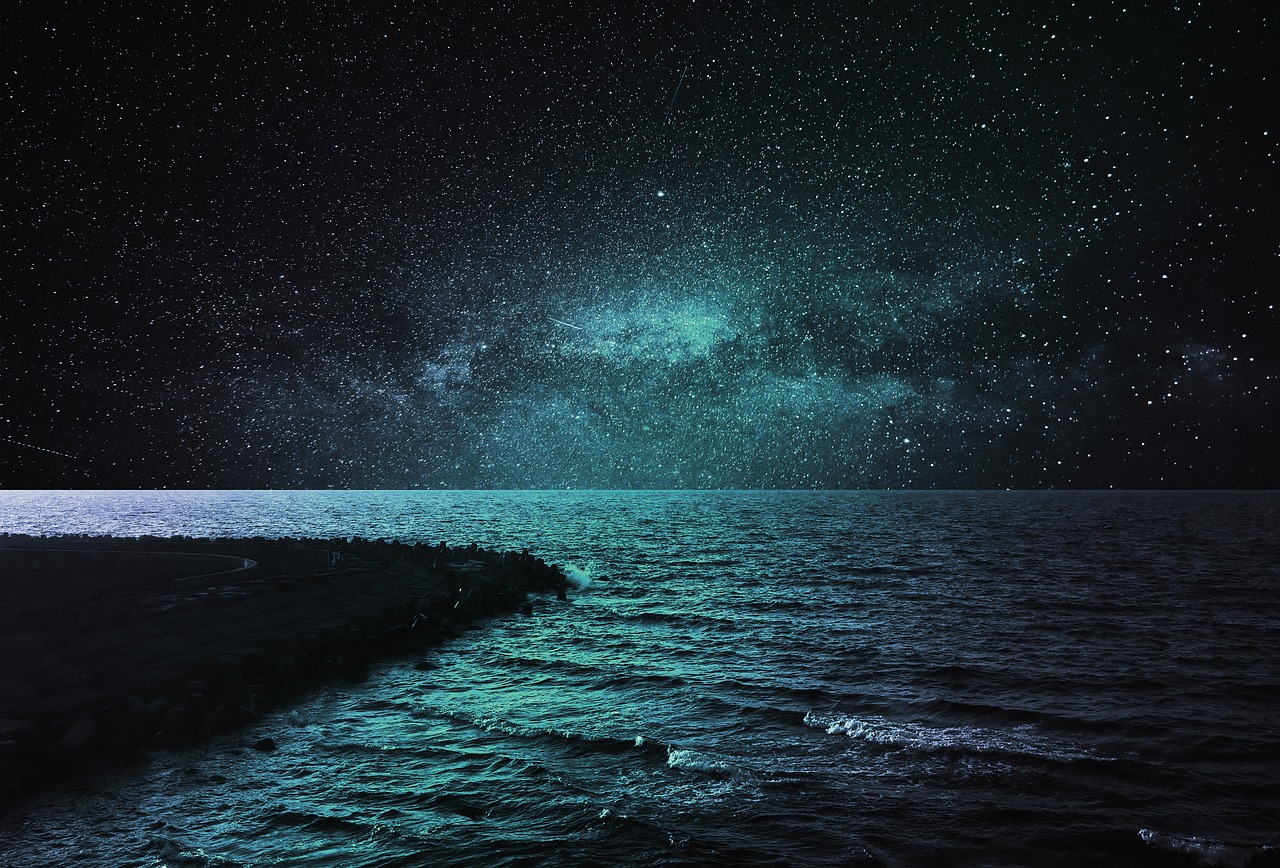Books & Culture
Heroes Will Not Save Us From the Climate Change Crisis
"How High We Go in the Dark" rethinks popular narrative tropes about the end of the world

Too often, popular fiction welcomes convenient last-minute solutions to the end of the world, even if the old cliché that things are darkest just before the dawn doesn’t match our lived experience. This misleading pattern lends itself well to epic-scale narratives largely reliant on a hero/villain dichotomy. Set the stage for total societal demise and no character can remain unaffected or out of the action. Think of Game of Thrones, Star Wars, or The Avengers—the direst situation in each plot revolves around a genocidal crisis, a whole society or galaxy on the brink of oblivion. The looming reality of mass death in these narratives is glossed over; the resolution hinges on nothing more than an easy and well-timed gamble at salvation. A snap of the fingers and everything returns to normal, a symbolic triumph becomes an all-encompassing pardon. The universe is saved. The good guys win. The buzzer beater is a sure thing.
The drama of this narrative pattern is irresistible. Audiences thrive on the ups and downs of these scenarios and subconsciously maintain faith that humanity will overcome. For writers, I imagine the matter is usually much more practical—this pattern leads to a surefire narrative fix. Sustainable change takes time and doesn’t provide the instant satisfaction of a brief climax. It’s more effective to save the day, fade to black, and include some iteration of, “there’s still so much more work to be done.” At best, this resolution is optimistic, but it’s precisely the feel-good nature that’s the problem. These dramatic swings mask the reality of humanity’s slow downfall, and suggest a convenient panacea is inevitably around the corner, when the truth is that there may be no such thing.
Sequoia Nagamatsu’s debut novel, How High We Go in The Dark rethinks and challenges the specious plot devices deployed in stories of humanity on the verge of an apocalypse. In this case, the primary threat comes by way of an arctic plague that emerges in melting Siberian permafrost. While Nagamatsu does ultimately launch a crew of characters (many chosen by lottery) on an interstellar search for a new world to colonize, the mission is not introduced until the second half of the book, long after extensively exploring how the unflinching pandemic decimates communities and economies around the world. This is to say the author grapples with the reality of unimaginable death for more than 150 pages before the idea of space travel even enters the picture. Instead, How High We Go in The Dark finds an orchestral cast of Japanese characters across interlinked stories working at euthanasia theme parks for terminally ill children, experimenting on hyper-intelligent pigs to develop donor organs, fixing malfunctioning robot pets to cope with grief, and preserving corpses in hotels as they await long lines for cremation, all while dealing with ongoing anti-Asian racism in the midst of global chaos.
It is precisely the author’s willingness to stare down the acute horrors of a world unprepared for environmental and societal collapse that makes it special.
If this description hits close to home—and, yes, the word “prescient” appears on the jacket copy—Nagamatsu’s practical imagination is a major part of what makes this novel so impressive. It is precisely the author’s willingness to stare down the acute horrors of a world unprepared for environmental and societal collapse that makes it special. Rethinking how we tell stories of immense tragedy could be essential to changing attitudes toward a sustainable future before it is too late. Another way of thinking about this: why are we so willing to simply adapt to the horrors of our current reality, waiting passively for a convenient cure to imminent mass extinction?
Nagamatsu writes:
“But something snapped in us when the dead could no longer be contained, when people didn’t really say goodbye. Cryogenic suspension companies proliferated, death hotels, services that preserved and posed your loved ones in fun positions, travel companies that promised a ‘natural’ getaway with your recently departed.”
We’re already experiencing the deleterious consequences of climate crisis in real time—the trauma is especially intense for people of color—but meaningful change remains sluggish and inconsistent. Recommendations too often pivot toward individual responsibility—eat less meat, don’t fly, recycle—rather than against government and corporate greed. With its first chapter beginning in 2030, How High We Go in The Dark portrays a rapidly approaching future that sees society shift toward industries profiting off death. The urgency shifts to an economy of grief and mourning.
For example, Dennis, a specialized worker at an elegy hotel, reflects:
“They gave bereavement coordinators like me studio apartments on the top floors of the elegy hotels. Some of my colleagues had native ideas about saving the world, but really we were just glorified bellhops for the mountains of Arctic plague victims awaiting cremation, for the families who wanted to curl up in a suite beside the corpses of their loved ones and heal. On any given day, the deceased from local hospitals lined the basement halls in biohazard bags, waiting to go through the three-part preservation process—sterilization, embalming, and our antibacterial plasticizing treatment. This bought families time to say goodbye while our crematoriums struggled to keep up with demand.”
The idea that the rich and powerful will swoop in and save the day is not only counterproductive to action, but also reinforces systemic oppression using a narrative formula that has become all too recognizable. After all, billionaire white men have the least to sacrifice, because if their fraudulent philanthropic ventures to clear their conscience don’t pan out, they imagine a well-stocked bunker or oceanic ark or lonely rocket available to whisk them away to permanent safety. How High We Go in The Dark, instead, reveals a brand of capitalist pandering that pivots mostly toward loss, while hinting at the ongoing protection of the most privileged.
How High We Go in The Dark reveals a brand of capitalist pandering that pivots mostly toward loss, while hinting at the ongoing protection of the most privileged.
This is to say that a colony on the moon or Mars is precisely the type of distracting narrative boondoggle that stunts progress toward any kind of actually sustainable solutions regarding our current environmental catastrophe. The space travel dreams of the ultra-rich neglect to mention that only a select few will ever have a chance at survival beyond the atmosphere while billions of people on terra firma deal with the realities of famine, rising tides, natural disasters, fatal temperatures, and climate genocide. In Scientific American, astronomer and JustSpace Alliance co-founder Lucianne Walkowicz argues, “I’m sure the extremely wealthy will continue to take expensive joyrides, occasionally offering seats to others and perhaps hoping that their antics will distract us enough to forget that the gluttonous accumulation of wealth wouldn’t be possible under any kind of just system.” Even if space were to become a feasible solution, the systemic inequities by which opportunities for space travel are dictated would need to dramatically change if there was any hope for those without tremendous wealth.
Yet, Nagamatsu never takes the easy way out. The irony of How High We Go in The Dark comes in its concluding chapters. While the space crew spends thousands of years, mostly frozen, bouncing from planet to planet in hopes of finding a safe home, humans back on Earth gradually come together to create a stable environment for future generations. In other words, interplanetary colonization is a moot bandage by the time it’s viable. The crew populating Earth II might tangentially contribute to saving the species, but since they spend most of their time preserving their bodies, in terms of the technological developments that have taken place back home they are in fact thousands of years behind. Those remaining on Earth, then, end up much more technologically advanced. The death toll on Earth continues to rise until a cure for the pandemic is developed, and that’s where and when the real progress begins.
On this interstellar mission, an artist tasked with painting and providing notes on the expedition, mentions, “When we arrived at the Centauri system, we received a decades-old message from Earth, informing us that a people began to rebuild their lives. Funerary corporations expanded to focus on climate projects, building seawalls around coastal cities, sponsoring the solar shade project until the end of the century.” The answer was there the whole time, then, even if the action comes long after the interstellar mission ship departs. There’s some trenchant wisdom in Nagamatsu’s suggestion that eventually those remaining have to deal with being left behind, and that it’s the money-flush funerary corporations that can take advantage of this society-wide need, and spend money to look like saviors right after having struck it rich exploiting so much devastation. Is this so different from Amazon advertising about its climate initiatives while Bezos simultaneously invests his vast personal wealth in vanity trips to space, a half-a-billion-dollar mega-yacht, and the ongoing underpayment and exploitation of Amazon’s warehouse employees?
Of course, Nagamatsu isn’t the sole writer developing this brand of climate fiction, but the attention the novel has already received is noteworthy, a sign that perhaps publishing is willing to see the commercial value in the literary portrayal of a more realistic kind of future. For another example, Allegra Hyde’s debut novel, Eleutheria, forthcoming in March 2022, could nearly be imagined in the same world as How High We Go in The Dark, if you don’t spend too much time overthinking it.
Years after the deaths of her doomsday prepper parents, as the environment collapses and late capitalism remains fruitful for the privileged few, Willa Marks, Hyde’s protagonist, inserts herself in an environmentalist cult in the Bahamas felicitously called Camp Hope. Willa’s perspective on climate crisis is clearly influenced by her upbringing, but the realities of the present are clear:
“Meanwhile, a real plague, unthawed from the Siberian permafrost, wreaked havoc in Russia. The global water shortages had started, along with local water contaminations…Bad news was heralded with grim constancy—and yet, in Boston at least, such news was forgotten with equal regularity. As difficult as everything had become, people looked ahead.”
Where the plague in How High We Go in The Dark is swift and worldwide, Eleutheria explores a more gradual decline, a kind of mass indifference lulled by routine comforts. After Willa finds Camp Hope, she opines of humanity, “We were moored in apathy, in the comfort of willful blindness…In America, we still had our guns, our flags, our stranglehold on exceptionalism. We still had the distraction of virtual realities, the Hollywood phantasmagoria, the pharmaceutical raft of painlessness. We still had the audacity to call climate change a problem for another time—another country—as if we weren’t already proverbial frogs, our skin sloughing off in hot water.”
Willa eventually discovers the environmentalist utopia she has committed herself to is not so far from the control of the privileged few who want to take advantage of the optics of a green future for political gain. “Everyone was talking about Geoengineering. Cap and trade. Smog futures. Undergirding the platform, the same old principles applied: consolidation of power, resources for the elite. A dead planet, after all, wouldn’t keep anyone in bratwurst and brandy and sixty-foot sailboats.” It’s the same con with new branding.
Much like many of us, their characters are trapped in banal, unquestioned patterns and rituals that ultimately cause a great deal of harm.
Nagamatsu and Hyde’s novels are distinctly different in genre and tone, but there is an underlying connective tissue between them found in their mutual intention to not look past the gritty details of real-time environmental decimation. They both find the tragedies of ecological disaster in the mundane. Much like many of us, their characters are trapped in banal, unquestioned patterns and rituals that ultimately cause a great deal of harm. But their characters also reveal how our survival instincts as humans can falter as we attempt to maintain a deleterious sense of normalcy.
In a recent article in The Nation, Mary Annaïse Heglar argues the imagination will be central to our fight against climate crisis: “For too long, the climate fight has been limited to scientists and policy experts. While we need those skills, we also need so much more. When I survey the field, it’s clear that what we desperately need is more artists.” It’s unfair to expect writers to solve everything or to uproot an established tradition of dramatic structure, but it’s not unreasonable to challenge the narrative crutch that a cure-all solution will always be waiting. The eureka moment has long since passed. We can’t cue the clean-up montage. There’s too much at stake for us to continue to wait for a last-second save.










